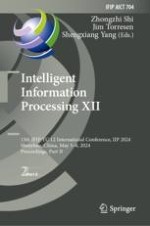The two-volume set IFIP AICT 703 and 704 constitutes the refereed conference proceedings of the 13th IFIP TC 12 International Conference on Intelligent Information Processing XII, IIP 2024, held in Shenzhen, China, during May 3–6, 2024.
The 49 full papers and 5 short papers presented in these proceedings were carefully reviewed and selected from 58 submissions. The papers are organized in the following topical sections:
Volume I: Machine Learning; Natural Language Processing; Neural and Evolutionary Computing; Recommendation and Social Computing; Business Intelligence and Risk Control; and Pattern Recognition.
Volume II: Image Understanding.
